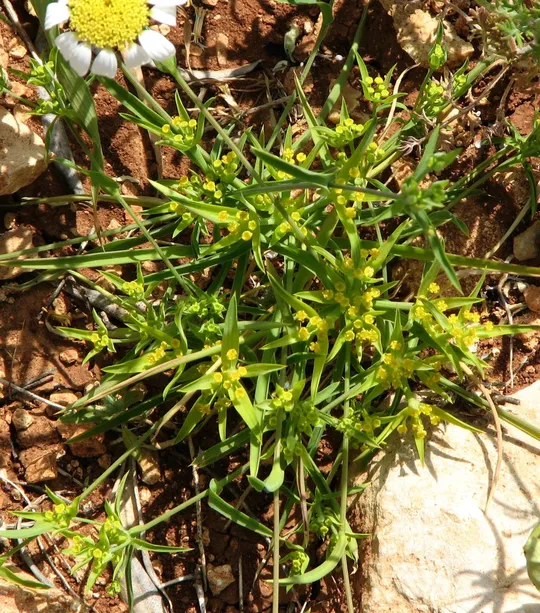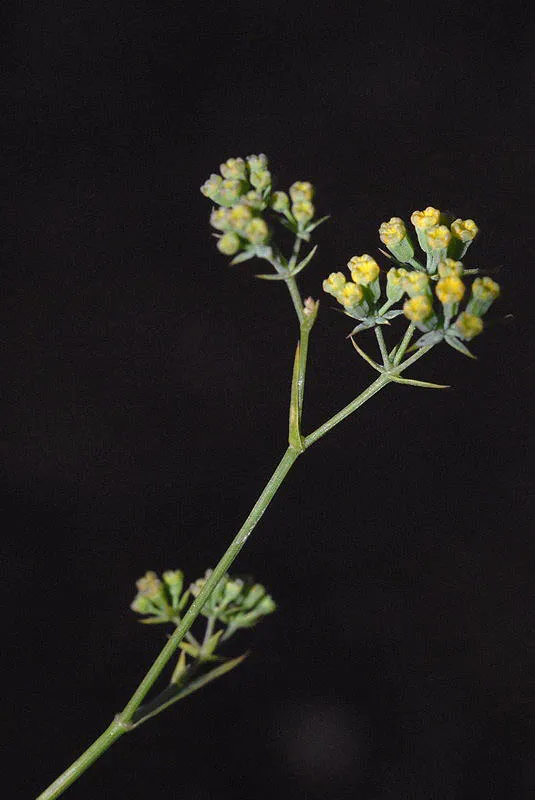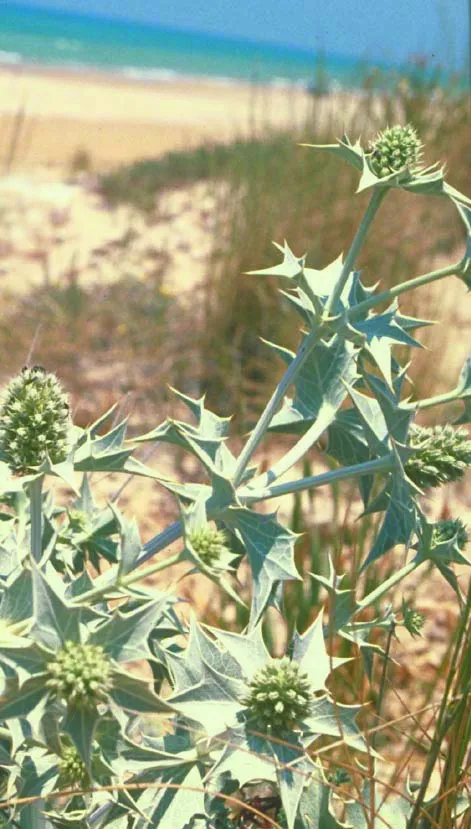Smallest Hare's Ear
Bupleurum orientale
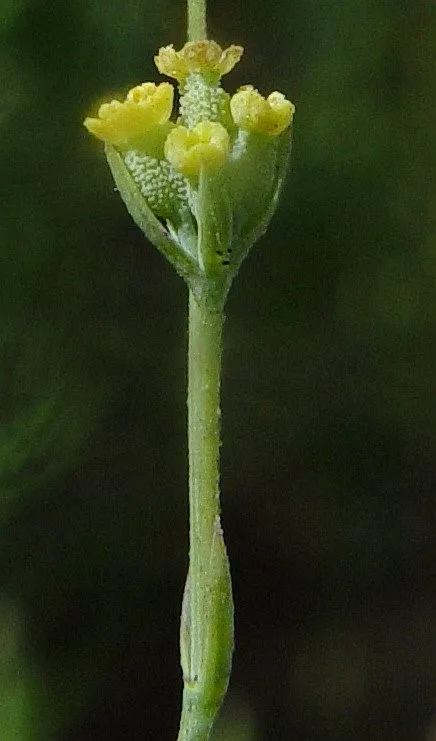

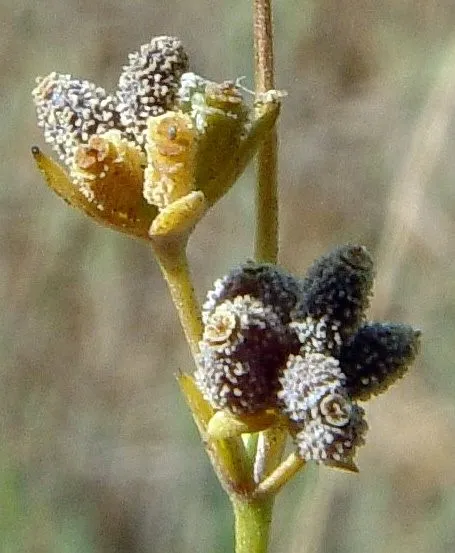
Bupleurum orientale grows in three regions: the Acre Valley, Carmel Coast and
the Kinarot Valley (upper section). Six sites are known in Israel: in the Acre Valley,
it remains in the Afek-Na'aman area, but disappeared from the Yagur-Kishon
area; on the Carmel Coast, it grows in the Atlit salt marshes and the Taninim
Stream. In the Kinarot Valley, it is known only from Tirat Tsvi.
It is extinct from two regions in which it once
grew: it disappeared from the the Te'o spring (Ǧahula) in the Hula Valley and
in the Sharon it grew in Hadera, En HaHoresh and the Alexander Stream.
Moist habitats, salt marshes, often on
flooded plains. In Turkey and Cyprus sometimes on sandy areas as well.
The genus Bupleurum is one of the largest in the Apiaceae family and
consists of about 150 species that are found mainly in the temperate regions of
the Northern Hemisphere and rarely in the tropics (Flora Palaestina). Nine
species grow In Israel, seven of them characteristic of the Mediterranean
region and another two of the transition zone and the desert. The genus has
characteristic small yellow flowers with rolled up petals, but most important its
leaves are pointed and entire, unlike most other genera of the family that have
dissected leaves. In Chinese medicine Bupleurum is used to treat a
variety of diseases, among them epilepsy and jaundice.
B. orientale was first defined as B.
tenuissimum,
a widely distributed plant in Western and Central Europe and the Black Sea
region. The populations of Israel and the Eastern Mediterranean were separated
from this species and identified as B. orientale whose plants are taller and narrower than the European
species.
·
The Israeli range of Bupleurum orientale is decreasing: it is extinct in two of the five regions in which it once
grew, and the number of sites in the regions on which it remained has decreased.
·
Its populations occur in clusters of thousands of plants,
in well-defined patches.
·
The wetlands and brackish water habitats in the Acre
Valley and the Carmel Coast are among the most vulnerable in Israel, due to
development pressure and desiccation. The spatial distribution of plants in
dense populations growing in a small area increases the risk of local
extinction.
·
B. orientaleis not protected in declared nature reserves in Israel.
·
According to extant partial data, the species is not
endangered in Eastern Mediterranean countries, except for Israel.
Small plots should be demarcated and
protected near the Atlit salt ponds, where the plant grows (along with other
species unique to this habitat). Existing populations should be monitored and
their long-term demographic trends studied. Seeds should be collected and their
germination studied to create backup collections of the species in coastal
refuge gardens, such as the refuge garden in the Afek nature reserve.
Bupleurum orientale is a plant of beaches and coastal plains in the Eastern
Mediterranean. It grows in southern Turkey, Cyprus, western Syria (Lattakia)
and Israel (Snogerup, 1972).
Bupleurum orientale is a rare annual plant of stream banks and salt marshes. The habitat is very vulnerable. Israel is at the southern edge of its global range.
Snogerup, S. (ed. Ds, P.H.). 1972. Bupleurum in Flora of Turkey 4: 406-407.
Current Occupancy Map
| 1000 squre meter pixel | 5000 squre meter pixel | 10000 squre meter pixel | |
|---|---|---|---|
| number of observations | 0 | 0 | 0 |
| in total pixels | 0 | 0 | 0 |
| Family | Apiaceae |
| Classification | On the endangered species list |
| Ecosystem | Mediterranean |
| Chorotype | Euro – Siberian - Mediterranean - Irano – Turanian |
| Conservation Site | Atlit Ponds, Taninim Stream |
| Rarity |
1
3
6
|
|---|---|
| Vulnerability |
0
4
4
|
| Attractiveness |
0
0
4
|
| Endemism |
0
0
4
|
| Red number |
1
4.2
10
|
| Peripherality | N |
| IUCN category | DD EW EX LC CR EN VU NT |
| Threat Definition according to the red book | Endangered |
 Based on:
Based on:
